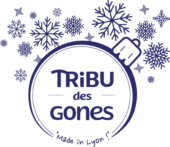When teams work in the same space, it’s straightforward to see what everyone’s doing. Designers are talking to product managers to get direction, or product managers meet with analysts to talk about consumer data and reports. It’s different for remote advertising groups since you can’t see what persons are global cloud team engaged on. Instead of letting team members battle it out in personal messages select the best answer, be ready to ask them right into a chat room to offer advice or ask some key questions. Very few group members could have your perspective on the complete project (or the full scope of your team’s phase of the project), so don’t be afraid to leap in.
Step #5: Adjourning Stage Of Group Growth Explained
Teams are a necessary part of any enterprise or organization, but creating an efficient group is commonly simpler mentioned than accomplished. A successful group is more than just a group of people working collectively – it’s a gaggle of people with complementary abilities who are committed to a common aim. The aim of this stage is to establish a high-performing group that is able to attaining its objectives. In the first phases of group improvement, the role of the chief is quite dominant. This implies that four phases of team development firstly, you’ll have to control and monitor the group and assign tasks to every team member.
The Four Stages Of Staff Development
It is normally a long-term relationship, where the objectives may change but are always set by the learner. The objectives are typically set with or on the suggestion of the coach. While the learner has main ownership of the objective, the coach has main possession of the method.
Origin Of The Tuckman’s Levels Of Group Growth
If groups get by way of the storming stage, conflict is resolved and some degree of unity emerges. In the norming stage, consensus develops around who the leader or leaders are, and particular person member’s roles. Interpersonal variations start to be resolved, and a way of cohesion and unity emerges. Team performance will increase throughout this stage as members study to cooperate and begin to focus on group targets.
The 5 Levels Of Staff Improvement
Team members purchase into the method and start to work together successfully. The team achieves higher cohesion as people find methods to work together, despite their differences. Each section of FSNP describes the totally different group dynamics that group leaders can count on to encounter as a team works its means through a project.
Step #3: Norming Stage Of Group Improvement Explained
Lack of dedication and avoidance of accountability, creates ambiguity within the group about course and priorities. The staff misses deadlines and deliverables, locations an undue burden on the group leader as the only source of self-discipline. Inattention to results happens when members of the team search particular person recognition and targets at the expense of the collective targets and infrequently work towards ‘saving personal skin’ and pass on the blame. Ego and standing can result in group members focusing on their particular person accomplishments as a substitute of the widespread function. Table 1 beneath summarizes the qualities and obstacles of effective team work.
Forming — Getting Tasks Started
And its success or failure very a lot hinges on the data and ability of its leadership. When leaders permit teams to kind and develop with unrealistic expectations or too little oversight, bad issues can happen. Conversely, when leaders recognize that every team wants a while and TLC to grow into a functional unit, good issues are most likely to follow. Having a approach to identify and perceive causes for adjustments in the team behaviors may help the team maximize its course of and its productivity. Having put the needs of the group forward of personal needs, the staff begins to give consideration to a shared goal and discover methods to solve any problems that come up. Typically, this means that the structure of the group is fixed, however the roles of each member are flexible.
- As you add people to the group, take note of what qualities and abilities you’ll need to complete the project.
- In 1975, Bruce Tuckman added a fifth stage to his Forming Storming Norming Performing mannequin.
- If these adjustments – and their ensuing behaviors – are acknowledged and addressed immediately, teams might efficiently stay within the Performing stage indefinitely.
Recently, several groups in our engineering division undertook a large, ludicrously complicated, business-critical infrastructure project. The number of risks and dependencies sent these established and cohesive dev groups right into a flurry of (ultimately, unproductive and/or counter-productive) activity. If your staff has ever thrashed about like this, then you understand what “storming” is. The group improvement cycle begins over more usually than you might suppose.
They begin challenging one another — in addition to their leader’s authority. Even so, Tuckman devoted most of his authentic paper to showcasing the four stages of group growth he identified in research on completely different sorts of teams. But, these are solely the tough strokes of this group improvement concept.
Rizing’s objective is to allow each enterprise that uses SAP options to achieve a very intelligent enterprise. We help our prospects with a mixture of our personal deep industry expertise and leading SAP applied sciences. It includes a period of orientation and getting acquainted with each other. Team members really feel secure and are entirely loyal to the group, the team’s morale is super-high and members are strongly motivated.
Teams with sturdy performance norms and high cohesiveness are excessive performing. Team work has shown improvement in efficiency in many features of healthcare in main health care and public health systems. It is a wonderful and most desirable methodology however requires good staff constructing and supervision. Different opinions are shared, and there’s a sense of competition.
